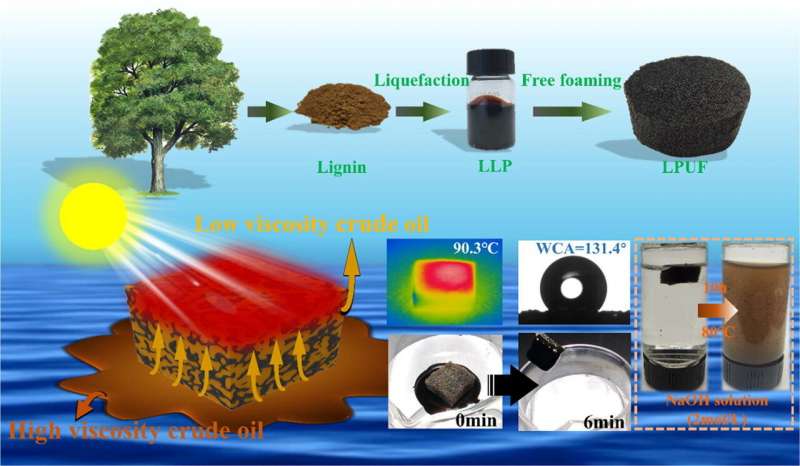The research team led by Professor Zhu Jin from the Ningbo Institute of Materials Technology and Engineering, Chinese Academy of Sciences, in cooperation with the research group of Professor Chen Tao from the Ningbo Institute of Materials Technology and Engineering of the Chinese Academy of Sciences and the research group of Professor Yan Ning from the University of Toronto, synthesized a crude oil spill repair Efficient carbon nanotube (CNT) modified lignin-based polyurethane adsorption material. The research was published in the Journal of Chemical Engineering.

In recent years, the leakage of crude oil or organic chemicals has caused economic losses, waste of petrochemical resources and serious environmental pollution, posing a great threat to the marine ecological environment and human health. However, existing crude oil cleanup methods cannot combine excellent remediation performance with environmental protection.
NIMTE researchers used the photothermal effect induced by sunlight as an energy source to heat heavy oil components, thereby greatly reducing their inherent high viscosity and achieving rapid and efficient crude oil cleanup.
Through a simple polyurethane foaming process, they prepared lignin-based polyurethane foam. As a photothermal adsorption material, the prepared polyurethane foam is doped with carbon nanotubes (CNTs). After being exposed to sunlight for 500 s, the sunlight absorption rate for heavy oil is as high as 97%, and its surface temperature even exceeds 90 °C, which is an excellent performance. . The modified foam adsorbed more than 6 times its weight of crude oil within 6 minutes under sunlight irradiation.
In addition, the lignin-based foam adsorption material can be degraded in an alkaline environment, and the degradation efficiency reaches 88.03% in 2 mol/L NaOH aqueous solution at 80 °C for 10 h, and the degradation rate is 6.25 mg/h. At the same time, under the same conditions Recyclable carbon nanotubes.
This work not only provides an efficient and environmentally friendly method for heavy crude oil spill repair and recovery, but also provides a new idea for the high-value utilization of dark bio-based polymers.



 微信扫一扫打赏
微信扫一扫打赏
